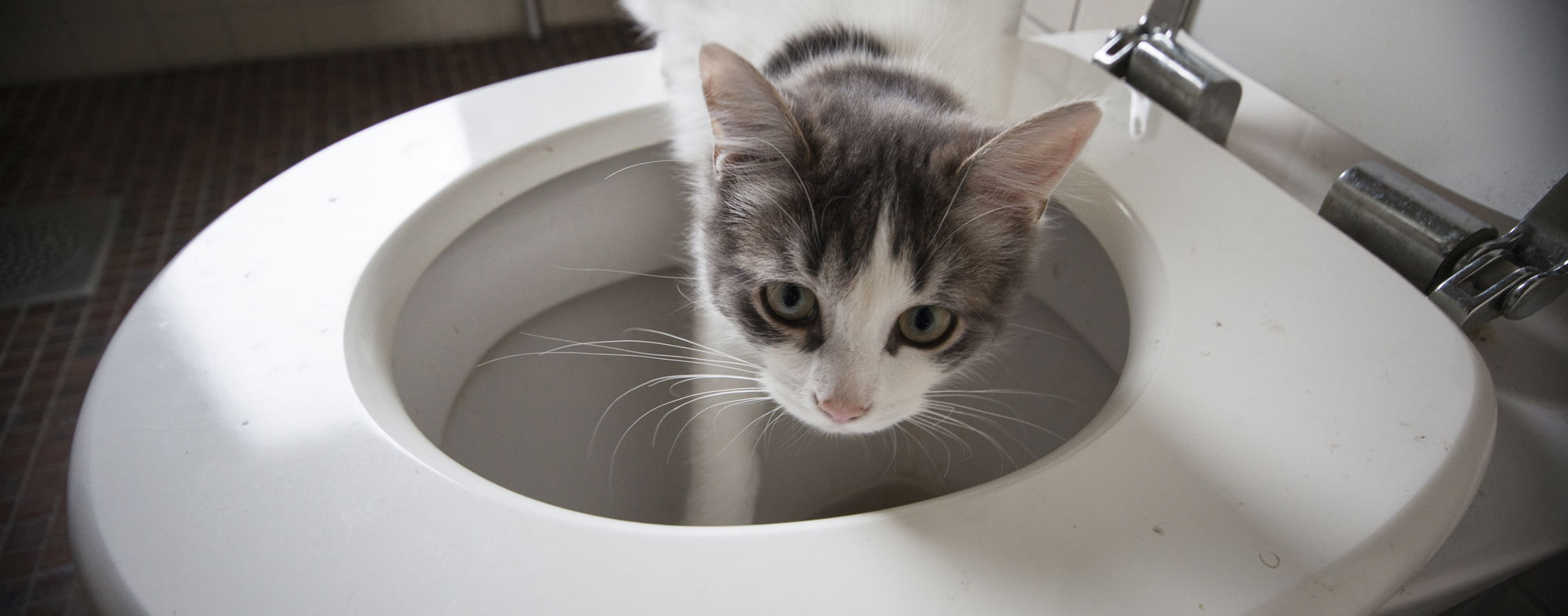Avoid Plumbing Problems: Never Flush Cat Poop Down Your Toilet - Expert Guidance
Avoid Plumbing Problems: Never Flush Cat Poop Down Your Toilet - Expert Guidance
Blog Article
Were you on the lookout for additional info on How to Dispose of Cat Poop and Litter Without Plastic Bags?

Intro
As pet cat proprietors, it's vital to be mindful of just how we dispose of our feline close friends' waste. While it may appear hassle-free to flush pet cat poop down the toilet, this practice can have damaging repercussions for both the setting and human health and wellness.
Alternatives to Flushing
Fortunately, there are more secure and more liable means to deal with pet cat poop. Take into consideration the adhering to alternatives:
1. Scoop and Dispose in Trash
One of the most usual method of dealing with pet cat poop is to scoop it into a naturally degradable bag and throw it in the garbage. Make sure to make use of a specialized litter inside story and take care of the waste quickly.
2. Use Biodegradable Litter
Go with biodegradable feline clutter made from products such as corn or wheat. These clutters are environmentally friendly and can be securely disposed of in the trash.
3. Hide in the Yard
If you have a backyard, think about burying pet cat waste in a marked area far from veggie gardens and water sources. Be sure to dig deep sufficient to prevent contamination of groundwater.
4. Set Up a Pet Waste Disposal System
Buy an animal garbage disposal system particularly created for pet cat waste. These systems use enzymes to break down the waste, minimizing smell and ecological influence.
Health and wellness Risks
Along with environmental problems, purging feline waste can likewise present health and wellness dangers to people. Feline feces may have Toxoplasma gondii, a bloodsucker that can cause toxoplasmosis-- a possibly severe ailment, specifically for pregnant females and people with weakened body immune systems.
Environmental Impact
Purging pet cat poop introduces harmful microorganisms and bloodsuckers into the water, positioning a substantial danger to marine environments. These contaminants can negatively influence aquatic life and compromise water quality.
Conclusion
Responsible animal ownership prolongs past supplying food and sanctuary-- it also includes proper waste monitoring. By avoiding flushing feline poop down the bathroom and going with alternate disposal methods, we can decrease our environmental footprint and safeguard human wellness.
Why Can’t I Flush Cat Poop?
It Spreads a Parasite
Cats are frequently infected with a parasite called toxoplasma gondii. The parasite causes an infection called toxoplasmosis. It is usually harmless to cats. The parasite only uses cat poop as a host for its eggs. Otherwise, the cat’s immune system usually keeps the infection at low enough levels to maintain its own health. But it does not stop the develop of eggs. These eggs are tiny and surprisingly tough. They may survive for a year before they begin to grow. But that’s the problem.
Our wastewater system is not designed to deal with toxoplasmosis eggs. Instead, most eggs will flush from your toilet into sewers and wastewater management plants. After the sewage is treated for many other harmful things in it, it is typically released into local rivers, lakes, or oceans. Here, the toxoplasmosis eggs can find new hosts, including starfish, crabs, otters, and many other wildlife. For many, this is a significant risk to their health. Toxoplasmosis can also end up infecting water sources that are important for agriculture, which means our deer, pigs, and sheep can get infected too.
Is There Risk to Humans?
There can be a risk to human life from flushing cat poop down the toilet. If you do so, the parasites from your cat’s poop can end up in shellfish, game animals, or livestock. If this meat is then served raw or undercooked, the people who eat it can get sick.
In fact, according to the CDC, 40 million people in the United States are infected with toxoplasma gondii. They get it from exposure to infected seafood, or from some kind of cat poop contamination, like drinking from a stream that is contaminated or touching anything that has come into contact with cat poop. That includes just cleaning a cat litter box.
Most people who get infected with these parasites will not develop any symptoms. However, for pregnant women or for those with compromised immune systems, the parasite can cause severe health problems.
How to Handle Cat Poop
The best way to handle cat poop is actually to clean the box more often. The eggs that the parasite sheds will not become active until one to five days after the cat poops. That means that if you clean daily, you’re much less likely to come into direct contact with infectious eggs.
That said, always dispose of cat poop in the garbage and not down the toilet. Wash your hands before and after you clean the litter box, and bring the bag of poop right outside to your garbage bins.
https://trenchlesssolutionsusa.com/why-cant-i-flush-cat-poop/

I'm certainly very fascinated by Can You Flush Cat Poo or Litter Down the Toilet? and I am hoping you enjoyed the entry. Sharing is caring. You just don't know, you may just be doing someone a favor. Thanks for going through it.
Get A Quote Report this page